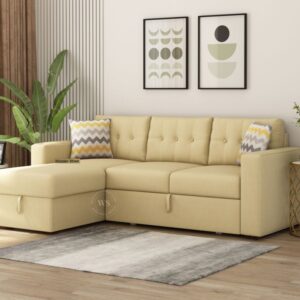Lighting is one of the most powerful tools in shaping a restaurant’s identity. The right fixtures don’t just make a space brighter — they influence mood, highlight décor, and even impact how customers perceive their food. Among the many options available, commercial pendant lighting for restaurants offers a versatile solution that blends style, function, and ambiance. Whether you’re designing a fine-dining venue, a casual café, or a lively bar, pendant lighting can define the experience from the moment guests walk in.
Why Pendant Lighting Works So Well in Restaurants
Pendant lights are ideal for restaurant settings because they provide targeted illumination without overwhelming the entire space. Suspended from the ceiling, they bring light closer to dining tables, service counters, or bar areas, creating intimate pools of light that feel personal and inviting.
Unlike broad overhead lighting, pendant fixtures allow for more control over brightness and focus. This means you can highlight specific areas — such as feature tables, dessert displays, or an open kitchen — while keeping the rest of the space softly lit for comfort.
Balancing Style and Functionality
In restaurants, lighting must perform well while complementing the décor. Commercial pendant lighting comes in an array of designs to suit different themes:
-
Minimalist Glass or Metal Shades – Perfect for modern and industrial-themed eateries.
-
Rustic Wood and Wicker Designs – Ideal for farm-to-table or coastal restaurants.
-
Clustered Pendant Arrangements – Adds drama and focus to large dining areas or private rooms.
-
Oversized Statement Pieces – Creates a bold focal point in lobbies or central dining areas.
Choosing materials and finishes that match the restaurant’s concept ensures the lighting feels like part of the story rather than an afterthought.
Creating Zones with Lighting
One of the biggest advantages of commercial pendant lighting for restaurants is its ability to define spaces without building walls. Pendant lights can be arranged to create distinct “zones” — for example, a row of pendants above a bar to separate it visually from the dining area, or smaller pendants over intimate tables in a quieter corner.
In open-concept restaurants, this zoning technique improves flow, guides guests naturally, and enhances the overall dining experience.
The Role of Height and Placement
Pendant lighting is most effective when hung at the right height. For restaurant dining tables, pendants typically work best at 28 to 34 inches above the tabletop. This ensures enough illumination for meals without obstructing sightlines or conversation.
Spacing is equally important. Pendants should be placed evenly, with careful attention to how the light pools on each table. Overcrowding fixtures can cause glare, while spacing them too far apart may create dark, uneven spots.
Enhancing the Dining Mood
Lighting sets the emotional tone of a restaurant. Warm-toned pendant lights can create a cozy, intimate atmosphere ideal for romantic dinners or casual dining. Cooler-toned lighting might be better suited for contemporary spaces with clean lines and vibrant energy.
Dimmer controls are a valuable addition, allowing you to adjust light levels for lunch service versus evening dining. This flexibility can transform the same space from bright and energetic to soft and sophisticated with the turn of a dial.
Durability and Maintenance in High-Use Environments
Restaurant lighting fixtures need to be durable and easy to maintain. Commercial-grade pendant lights are built with stronger materials, finishes that resist tarnish, and designs that can withstand frequent cleaning.
LED pendant lights are especially popular in restaurants for their long lifespan and energy efficiency. They reduce replacement costs and minimize heat output, which helps keep dining areas comfortable.
Branding Through Lighting Design
A restaurant’s lighting is part of its brand identity. A series of elegant brass pendants might signal high-end sophistication, while colorful artisan glass pendants could convey creativity and fun. Lighting can subtly reinforce the type of experience guests should expect — whether that’s fine dining, family-friendly comfort, or casual socializing.
When used thoughtfully, commercial pendant lighting restaurants becomes a signature design element that guests remember long after their meal.
Pairing Pendant Lights with Other Fixtures
While pendant lighting can be the star of a restaurant’s design, it works best when layered with other lighting sources. Combining pendants with wall sconces, recessed ceiling lights, or track lighting ensures balanced illumination throughout the space. Accent lights can highlight artwork or architectural features, while pendants create intimacy at the table level. This layered approach prevents the space from feeling flat and adds depth, enhancing the overall dining atmosphere.
Final Thoughts
From practical illumination to emotional impact, pendant lighting plays a central role in restaurant design. It can highlight key areas, shape the atmosphere, and enhance the dining experience for every guest.
By choosing fixtures that align with the restaurant’s theme, placing them strategically, and incorporating adjustable lighting options, owners can create spaces that feel inviting, functional, and memorable. In the competitive world of dining, details matter — and the right pendant lights can help a restaurant stand out.



